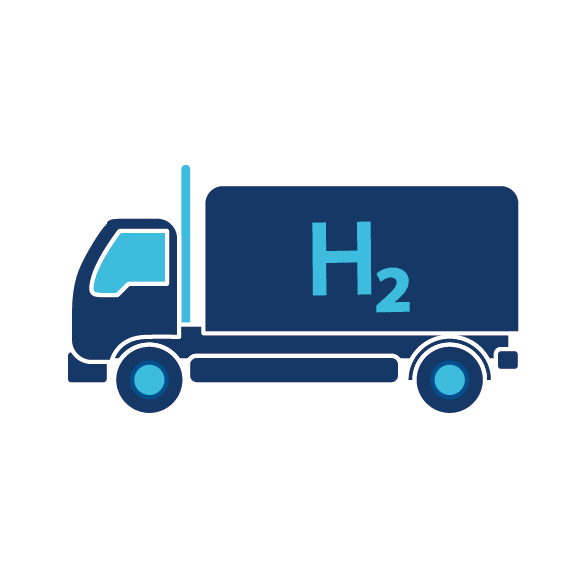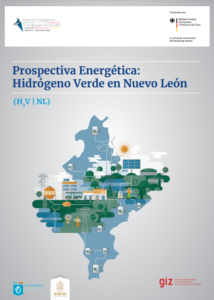Greenhouse gas (GHG) emissions – the atmospheric gases responsible for causing global warming and climatic change – are critical to understanding and addressing the climate crisis. Despite an initial dip in global GHG emissions due to COVID-19, the United Nations Environment Programme’s latest Emissions Gap Report (EGR) expects a strong rebound in 2021, when emissions are expected to be only slightly lower than the record levels of 2019. While most GHGs are naturally occurring, human activities have also been leading to a problematic increase in the amount of GHG emitted and their concentration in the atmosphere.
This increased concentration, in turn, can lead to adverse effects on climate. Effects include increases in the frequency and intensity of extreme weather events – including flooding, droughts, wildfires and hurricanes – that affect millions of people and cause trillions in economic losses. The Emissions Gap Report found that if we do not halve annual GHG emissions by 2030, it will be very difficult to limit global warming to 1.5°C compared to pre-industrial levels by the end of the century. Based on current unconditional pledges to reduce emissions, the world is on a path to see global warming of 2.7 °C by the end of the century compared to pre-industrial levels. “Human-caused greenhouse gas emissions endanger human and environmental health,” says Mark Radka, Chief of UNEP’s Energy and Climate Branch. “And the impacts will become more widespread and severed without strong climate action.”
So how exactly do GHG emissions warm the planet and what can we do? What are the major greenhouse gases? Carbon dioxide (CO2), methane and nitrous oxide are the major GHGs. CO2 stays in the atmosphere for up to 1,000 years, methane for around a decade and nitrous oxide for approximately 120 years. Measured over a 20-year period, methane is 80 times more potent than CO2 in causing global warming, while nitrous oxide is 280 times more potent.
“The climate emergency demands action from all of us. We need to get to net zero greenhouse gas emissions by 2050 and everyone has a role to play,” said Niklas Hagelberg, UNEP’s Climate Change Coordinator. Coal, oil and natural gas continue to power many parts of the world. Carbon is the main element in these fuels, and when they’re burned to generate electricity, power transportation or provide heat, they produce CO2, a colourless, odourless gas. Oil and gas extraction, coal mining and waste landfills account for 55 per cent of human-caused methane emissions.
Approximately 32 per cent of human-caused methane emissions are attributable to cows, sheep and other ruminants that ferment food in their stomachs. Manure decomposition is another agricultural source of the gas, as is rice cultivation. Human-caused nitrous oxide emissions largely arise from agriculture practices. Bacteria in soil and water naturally convert nitrogen into nitrous oxide, but fertilizer use and run-off add to this process by putting more nitrogen into the environment. Photo: Unsplash/Steve Douglas | Rice cultivation is a major source of methane emissions, as is animal agriculture. What are the other greenhouse gases? Fluorinated gases – such as hydrofluorocarbons, perfluorocarbons and sulfur hexafluoride – are GHGs that do not occur naturally. Hydrofluorocarbons are refrigerants used as alternatives to chlorofluorocarbons (CFCs), which depleted the ozone layer and were phased out thanks to the Montreal Protocol. The other gases have industrial and commercial uses. While fluorinated gases are far less prevalent than other GHGs and do not deplete the ozone layer like CFCs, they are still very powerful. Over a 20-year period, the various fluorinated gases’ global warming potential ranges from 460–16,300 times greater than that of CO2. Water vapour is the most abundant GHG in the atmosphere and is the biggest overall contributor to the greenhouse effect.
However, almost all the water vapour in the atmosphere comes from natural processes. Human emissions are very small and thus relatively less impactful. What is the greenhouse effect? The Earth’s surface absorbs about 48 per cent of incoming solar energy, while the atmosphere absorbs 23 per cent. The rest is reflected back into space. Natural processes ensure that the amount of incoming and outgoing energy are equal, keeping the planet’s temperature stable, However, GHGs, unlike other atmospheric gases such as oxygen and nitrogen, are opaque to outgoing infrared radiation.
As the concentration of GHGs in the atmosphere increases due to human-caused emissions, energy radiated from the surface becomes trapped in the atmosphere, unable to escape the planet. This energy returns to the surface, where it is reabsorbed. Since more energy enters than exits the planet, surface temperatures increase until a new balance is achieved. This temperature increase has long-term climate impacts and affects myriad natural systems. What can we do to reduce GHG emissions? Shifting to renewable energy, putting a price on carbon and phasing out coal are all important elements in reducing GHG emissions. Ultimately, stronger nationally determined contributions are needed to accelerate this reduction to preserve long-term human and environmental health.
“We need to implement strong policies that back the raised ambitions,” says Radka. “We cannot continue down the same path and expect better results. Action is needed now.” During COP26, the European Union and the United States launched the Global Methane Pledge, which will see over 100 countries aim to reduce 30 per cent of methane emissions in the fuel, agriculture and waste sectors by 2030. UNEP has outlined its six-sector solution, which can reduce 29–32 gigatons of carbon dioxide by 2030 to meet the 1.5°C warming limit. UNEP also maintains an online “Climate Note,” a tool that visualizes the changing state of the climate with a baseline of 1990.
Despite the challenges, there is reason to be positive. From 2010 to 2021, policies were put in place which will lower annual emissions by 11 gigatons by 2030 compared to what would have otherwise happened. Through its other multilateral environmental agreements and reports, UNEP raises awareness and advocates for effective environmental action. UNEP will continue to work closely with its 193 Member States and other stakeholders to set the environmental agenda and advocate for a drastic reduction in GHG emissions. Beyond these movements, individuals can also join the UN’s #ActNow campaign for ideas to take climate-positive actions. By making choices that have less harmful effects on the environment, everyone can be part of the solution and influence change. Speaking up is one way to multiply impact and create change on a much bigger scale.







